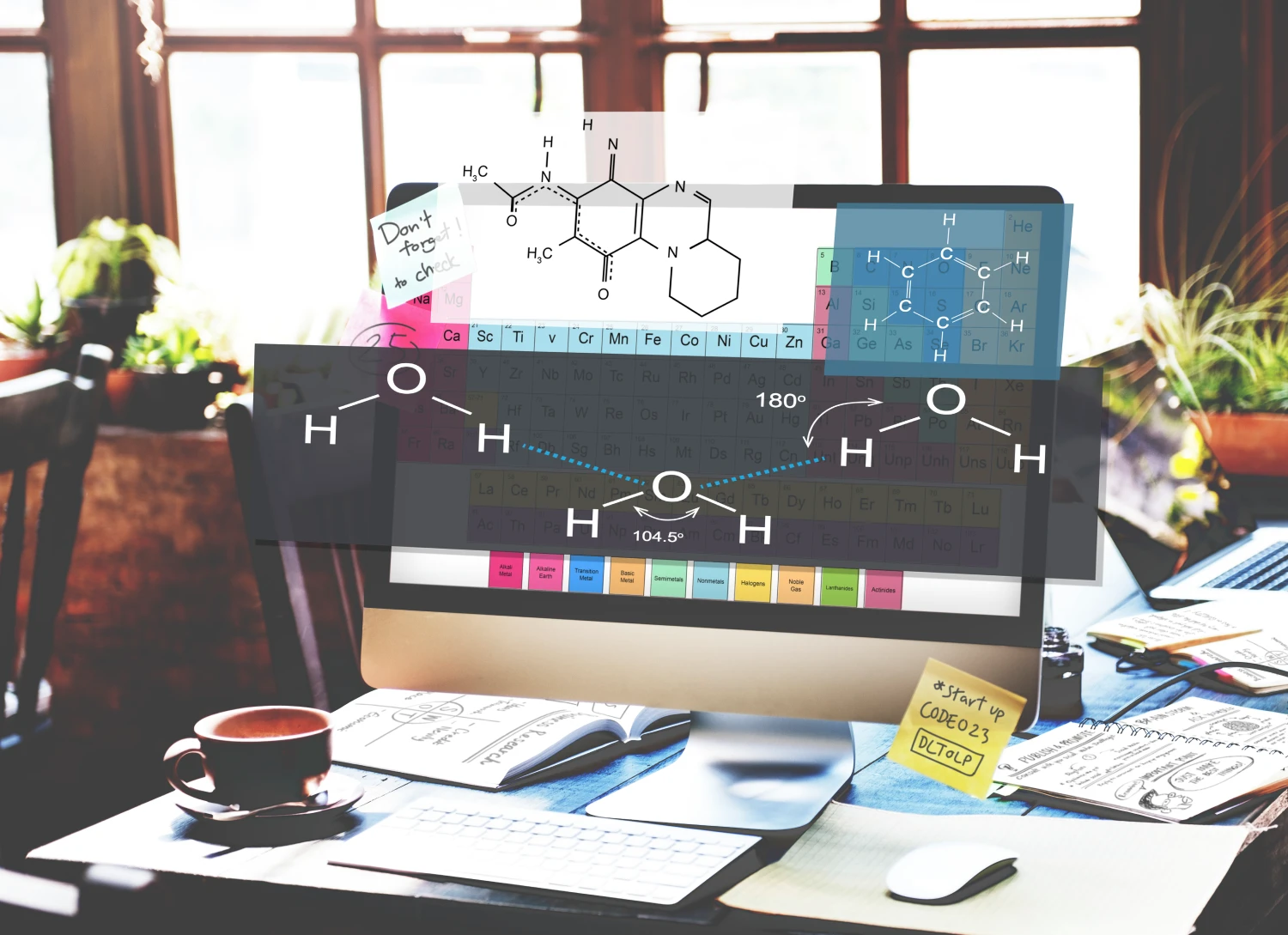7 Steps to Protect Your Food Product Formulation
Every food product formulation is the first step toward scalable innovation. While balancing flavors and refining textures signals creative progress, the real challenge begins when that work transforms into a tangible food product prototype.
At this stage, your food product development process is increasingly exposed to the risk of sensitive information being leaked or proprietary elements being replicated, often without detection or legal recourse.
In fact, in May 2025, a U.S. federal jury awarded $222 million to Zest Labs after Walmart was found guilty of misappropriation of trade secrets related to freshness-monitoring technology during co-development. The case underscored a harsh reality: even large-scale partnerships can put confidential innovations at risk.
To mitigate these risks, businesses must treat innovation as a protected asset, not just a culinary milestone. Whether you’re refining a prototype or navigating early food product ideation, this blog outlines seven strategic measures for securing food product ideas and ensuring robust, long-term food innovation protection.

Step 1 – Document Everything: Your First Line of Defense
Recording every formulation iteration, ingredient modification, and process adjustment creates a structured foundation for quality control, regulatory compliance, and future scalability.
Include comprehensive details such as product specifications, raw materials sourcing, and timelines across all phases of process development. For those in formulation development for food startups, this discipline is particularly vital to establish traceability and credibility in early-stage operations.
To enhance food product formulation protection, record and timestamp key milestones throughout development. Over time, these records become a strategic asset, supporting food science and product safety compliance, strengthening IP ownership, and serving as crucial evidence in case of patent audits or disputes. In an Industry where ideas are vulnerable to imitation, your paper trail is your proof of originality.
For example, Peggy Lawton Kitchens successfully defended its proprietary chocolate chip cookie recipe as a trade secret in Massachusetts courts. The company’s meticulous documentation—stored securely, broken down into separate ingredient proportions, and only accessible to trusted staff—proved crucial. The court noted, “no doubt…the basic ingredients…were common…[but] the unique combination and secret ingredient” justified trade secret protection.
Step 2 – Use NDAs and Legal Agreements to Protect Confidentiality
A well‑structured Non-Disclosure Agreement for food product development serves as a foundational legal safeguard during R&D, product sampling, or early-stage collaboration with co‑manufacturers and partners. According to recent findings, 16.1% of small-scale innovators consider NDAs critical for protecting proprietary formulations, operational workflows, and internal know‑how, especially when navigating the vulnerabilities of a novel food product formulation.
What a Legally Robust NDA for Food Products Should Contain
- Clear scope of confidentiality: Define the information covered, including food product formulation, process flows, and packaging details.
- Binding language: Clearly identify the parties involved and their legal obligation not to disclose to unauthorized 3rd party entities.
- Defined duration: Establish a confidentiality period, typically ranging from 2–5 years or perpetual, depending on the formulation’s longevity.
- Stated consequences: Specify legal remedies such as injunctions, monetary damages, or litigation for breach.
- Labeling of trade secrets: Clearly mark confidential materials to ensure enforceability in safeguarding food formulation.
Use Confidentiality Agreements with Co-Packers and Suppliers
Outsourcing production remains one of the most critical vulnerabilities in any food R&D strategy. Whether partnering with reputable suppliers, a signed confidentiality agreement is essential. It should clearly define proprietary elements, responsibilities, and legal consequences in case of breach.
Before onboarding, ensure all third parties execute binding Non-Disclosure Agreements that specify the scope and duration of confidentiality. These agreements must also include process-specific clauses to prevent unauthorized replication, resale, or inadvertent knowledge transfer across internal teams or external clients.
Even trusted suppliers with longstanding reputations must be contractually obligated; reputation does not equate to immunity from risk. Without enforceable terms and meaningful penalties, your food product formulation could be exposed to competitors or misappropriated by entities not involved in its development.
A cautionary example is the 2023 case of Grillo’s Pickles vs. Patriot Pickle, in which Grillo’s accused its co-packer of using confidential recipes and processes, disclosed under an NDA, to create a nearly identical product for Whole Foods at a lower price point. Despite legal agreements, Grillo’s alleged that Patriot Pickle exploited proprietary knowledge, highlighting the need for rigorous enforcement alongside well-drafted NDAs.
Such third parties typically access critical proprietary details, including:
- Ingredient ratios
- Batch sizes and processing sequences
- Shelf-life optimization techniques
- Packaging blueprints
- SOPs and development timelines
Even limited exposure can result in unintended duplication. To ensure effective protection of food formulation when using co-packer relationships, set clear expectations, integrate audit checkpoints, and maintain compliance throughout the engagement. This proactive approach safeguards both the integrity of your food product formulation and your long-term innovation strategy.
Step 3 – Choosing Between Trade Secret and Patent Protection in Food R&D
Criteria | Trade Secret | Patent |
Disclosure | Stays confidential | Publicly disclosed |
Duration | Indefinite (as long as it’s secret) | 20 years (from filing) |
Protection Method | Internal controls, NDAs | Government-issued legal rights |
Cost | Low to moderate | High (filing + attorney fees) |
Best For | Recipes, methods hard to reverse-engineer | Highly technical or public-facing innovations |
Examples | Coca-Cola formula, spice blends | Impossible Foods’ heme protein, NotCo’s AI tech |
In the food industry, safeguarding formulations demands a deliberate choice between trade secrets and patent protection, each offering distinct advantages based on the nature of the innovation and the company’s long-term strategy.
Trade secrets refer to confidential business information, such as proprietary recipes, preparation techniques, or formulation methods, that provide a competitive edge and are protected through internal controls rather than public registration. They are ideal for innovations that can remain undisclosed indefinitely, even from the early stages of food ideation.
In contrast, patents are formal legal protections granted to inventions that fulfill the distinctiveness requirement, meaning they must be novel, non-obvious, and industrially applicable. Patent protection is especially useful when the food product formulation is likely to become publicly accessible or reverse-engineered.
When Trade Secret Protection Is Ideal
Trade secret protection is most effective when confidentiality can be rigorously maintained through information compartmentalization, restricted access, and clearly defined internal protocols. A notable example is Coca-Cola’s formula, which has remained undisclosed for over 100 years. Only a select few employees have access to the full formulation, and it is never written down in its entirety in any publicly accessible format.
In today’s context, many artisanal food startups and niche brands continue to rely on trade secrets to protect signature spice blends, unique fermentation methods, or proprietary preparation workflows. However, to maintain food recipe confidentiality, trade secrets require ongoing enforcement, such as employee NDAs, limited access, and secure documentation practices.
When Patent Protection Is the Better Option
Patent protection becomes the preferred route when maintaining confidentiality is impractical or when the formulation is highly technical and fulfills the distinctiveness requirement. For example, innovations that involve unique food product formulation parameters—such as exact pH balances, texture stability methods, or novel processing temperatures—are strong candidates for patents.
Unlike trade secrets, patents require public disclosure but provide exclusive rights for up to 20 years. A recent example is Impossible Foods’ patent, which covers the use of heme proteins in plant-based meat to mimic the appearance and flavor of real meat. Similarly, NotCo, a Chilean food-tech company, has filed multiple patents for its AI-assisted formulation processes that develop plant-based alternatives for dairy and meat.
Patent filing is a strategic move when innovation is susceptible to replication or when regulatory disclosures (e.g., FDA approval processes) would reveal sensitive details anyway. A well-drafted patent helps enforce ownership, build investor confidence, and support future licensing opportunities.
How to File Your Patent with a Professional
Securing patent protection often hinges on expert support. A study of 500 U.S. patent filings found that 76% of pro‑se applications were abandoned, compared to just 35% when handled by a professional.
A well-drafted patent isn’t mere paperwork. It’s a strategic asset for intellectual property in the food industry defense. Innovations like unique ingredient blends, technical processing methods, or packaging formats require meticulous legal and technical articulation.
As David Postolski, Patent Attorney and Senior Partner at Gearhart Law, articulates: “Getting a patent is a choice you make…you don’t have to take that deal.” His point highlights the balance between protection and disclosure. If you decide to move forward, here are five critical steps to ensure your food product formulation gets the legal protection it deserves:
- Vet a food industry patent agent: Select a registered patent agent with experience in food science, formulation patents, or process-related claims. Ask for their track record with FSSAI-facing innovations or technical filings, and verify their registration with the Indian Patent Office (IPO).
- Structure your invention disclosure: Provide detailed documentation, including ingredient ratios, process steps, and stability parameters (like pH, moisture content, or shelf life). Use lab reports and batch testing data to support claims of novelty and utility.
- Choose your filing route: Start with a provisional patent if the formulation is still evolving, or go straight for a non-provisional filing if it’s ready for full protection. Discuss with your attorney whether international filing (PCT) is necessary.
- Prepare technical illustrations and diagrams: Include flow charts, microstructure images, or equipment schematics if the process involves machinery or specific production stages. These visuals strengthen the application’s technical scope.
Review patent classification and scope: Ensure your registered patent agent files under the appropriate classification as per the Indian Patent Office (IPO) standards for food science, ensuring the claims cover composition, process, and foreseeable modifications to strengthen enforceability.
Step 4 – Implement Internal Security Measures
Implementing internal safeguards is essential to preserving the integrity of your food product prototype. The following three internal control measures help mitigate risks of data leakage and unauthorized exposure of sensitive information:
- Restrict access: Limit formulation data visibility strictly to essential personnel, such as lead food technologists or regulatory officers. Departmental segmentation of R&D databases ensures that cross-functional teams do not access formulation specifics unless operationally necessary.
- Encrypt and password protect files: Apply enterprise-grade encryption protocols and use password-protected files to secure digital records. Full-disk encryption ensures that data remains inaccessible and unintelligible even in the event of a breach.
- Secure physical documents: Archive physical records, prototypes, and technical formulations in a secure storage facility with access control and surveillance. This physical layer of protection reinforces digital protocols and enhances your document security framework.
Together, these measures provide a structured approach to maintaining confidentiality, safeguarding proprietary inputs, and reducing vulnerability throughout your food product formulation lifecycle.
Step 5 – Vet Third Parties and Manufacturers Carefully
Not all collaborators manage your food product formulation with the diligence it requires. To reinforce your food R&D protection, perform a comprehensive assessment of every potential partner before engagement.
- Work only with reputable suppliers who demonstrate proven expertise in handling proprietary formulations.
- Conduct background checks for previous breaches, lack of transparency, or unresolved disputes—absolute cleanliness in this area is non-negotiable.
- Evaluate their data access protocols during product development and enforce clear IP protection measures.
- Include robust non-disclosure and non-compete clauses that define ownership and obligations, ensuring you are effectively protecting food formulations throughout external collaborations.
Step 6 - Build a Long-Term Legal & Brand Protection Strategy
Protect Your Brand with Trademarks and Trade Dress
The identity of your food product formulation is defined by elements such as its name, logo, packaging design, and color palette. Securing a trademark grants exclusive rights to these assets and protects your offering from imitation in competitive markets.
- Pursue trademark protection for brand names, visual symbols, and slogans to establish and defend market positioning.
- Evaluate the potential of trade dress—the distinctive visual appearance of packaging—as a layer of protection.
- Ensure brand identity is reinforced to safeguard food formulations and the visual brand assets, such as product name, logo, and packaging design to ensure they are legally protected and commercially secure.
Conduct Regular Audits to Enforce Compliance
Legal safeguards are only effective when actively enforced. Conduct regular audits to evaluate the integrity of your protection measures.
- Review internal contracts, access protocols, and NDA compliance.
- Verify that external vendors and co-manufacturers uphold agreed standards.
- Systematically audit how food product confidentiality is maintained across storage, access, and data transfer points to detect vulnerabilities and reinforce compliance across the organization.
Step 7 – Educate Your Team on IP Awareness and Compliance
Finally, integrate your internal team into the protection strategy. Training must be embedded in your standard formulation development protocol. Even with robust legal frameworks and secure systems, your food product formulation remains vulnerable if team members are unaware of IP responsibilities. Unintentional disclosures often occur due to informal conversations, mishandled documents, or process errors.
To mitigate this:
- Deliver periodic training on IP protocols, NDA adherence, and data-handling practices.
- Use practical examples to demonstrate how minor oversights can jeopardize proprietary information.
- Establish a clear procedure for reporting breaches or suspicious activities.
- Incorporate confidentiality compliance into onboarding for all new hires in R&D, production, and related departments.
Conclusion
Food product formulation protection is not a one-time task but a continuous strategic investment. From documenting everything and robust NDAs to internal controls and legal safeguards, every element contributes to protecting food formulations from inadvertent leaks and deliberate imitation.
Effective food innovation protection requires a synergy of legal expertise, technical precision, and organizational alignment. Whether you’re an emerging startup or an expanding enterprise, treating your formulation as a core business asset supports long-term competitiveness. As regulatory standards advance, aligning with high benchmarks in food science and safety further enhances your risk management framework.
Consider protection not an afterthought but an integral ingredient in your recipe for sustained success.
At Food Buddies, we help food innovators bring their ideas to life while ensuring their formulations are legally secure from ideation to launch. Start Your Food Product Development Journey
Frequently Asked Questions (FAQs)
1. What is a prototype in food product development?
A food product prototype is an early-stage version of a formulation developed to evaluate and optimize its taste, texture, appearance, shelf stability, and functional performance. It serves as a critical testing model to ensure the final product aligns with quality benchmarks, regulatory standards, and consumer expectations before moving into commercial-scale production.
2. Why are NDAs important in food product development, and what should they include?
NDAs are essential legal tools for protecting proprietary details during collaboration. An NDA should define what’s confidential, who’s involved, how long it’s protected, and the consequences for breach. NDAs ensure critical elements of your formulation and process remain secure during external interactions.
3. What are common legal mistakes food startups make during product development?
Many startups delay NDAs, neglect to document R&D iterations, or rely on verbal agreements. These oversights weaken IP claims. Protect your innovation early with formal agreements, traceable documentation, and internal security policies to avoid costly risks later in the process.
4. What are the intellectual property rights of the food industry?
IP rights in the food industry include patents for processes, trademarks for branding, trade secrets for recipes, and copyrights for packaging or design, ensuring creators can legally protect and profit from their innovations.
5. What is the difference between trade secrets and patents in food product protection?
Trade secrets protect confidential information—like recipes or processes—without public disclosure. Patents require public documentation but grant exclusive rights for up to 20 years. Choose trade secrets when confidentiality is sustainable; opt for patents when innovation can be reverse-engineered or must be disclosed.






